Crew Bios, Photos, Patch – November 13th
MDRS Crew 268
November 13-26, 2022
Name: Dr. Jennifer Hesterman
Colonel, US Air Force (retired)
Crew Title: Commander
Country: United States
Bio: Jenni is a retired Air Force colonel and counterterrorism expert. She has a doctorate in Higher
Education, MS degrees in Applied Behavioral Science and Military Operational Art and Science, and a BS
in Geography. She is an author, professor, public speaker and explorer who reached both the North and
South Poles.
Name: Elizabeth Balga
Crew Title: Health & Safety Officer
Country: United States
Bio: Elizabeth is an engineer specializing in spacecraft flight crew integration, test, and operations on
Boeing’s CST-100 Starliner Program. She holds a BS in Aerospace Engineering and an MS in aerospace
Astronautical Engineering. She has an Emergency Medical Technician certification, advanced and rescue
SCUBA certifications, and works part-time as a parabolic flight attendant for the Zero Gravity Corporation.
Name: Caitlyn Hubric
Crew Title: Crew Biologist & Crew Greenhab Officer
Country: United States
Research: Caitlyn is a student pursuing her bachelor’s degree in Astrobiology. She currently does
research in areas of chemical soil ecology and is working to help design the food
production/decomposition stage of a bioregenerative life support system for a colony. She plans to search
for microorganisms at MDRS that could potentially have plant growth promoting capabilities and could be
utilized in regolith based agriculture.
Name: Judith Marcos
Crew Title: Crew Engineer
Country: United States
Bio: Judith Marcos is a student still at the start of her engineering career. She is currently pursuing a
mechanical and civil engineering degree at MCC. In order to further develop her knowledge and
experience in engineering, Judith holds a position as an intern at the Tx Department of Transportation.
The previous year her team has also competed and placed in the 2022 Nasa MINDS competition.
Name: Jas Purewal
Crew Title: XO/Scientific Officer
Country: United Kingdom
Jas Purewal MSc Astrophysics. Senior research scientist working for a UK national lab. Co-founder and
Executive Director of The Analog Astronaut Community and Conference. In 2020, Jas built a low-fidelity
habitat and conducted her own analog mission in the UK.
Name: Izabela Shopova
Crew Title: Communication Officer
Country: Bulgaria (New Zealand, Australia)
Bio: Izabela is an engineer with 15 years experience in information management systems and process
optimisation, a popular writer of non-fiction books and a learning designer. She has a fascination with
extreme Mars-like environments and has participated in an Antarctic expedition in 2016, and traveled
through the Atacama desert in 2018. Izabela was a semifinalist for the first FMARS mission in 2014.
Strong supporter of the liberalisation of space, Izabela is working on developing an accessible interactive
learning experience for analog astronauts across the world.
Sol Summary – November 19th
Sol: 6
Summary Title: Lichens on Mars
Author’s name: Jas Purewal
Mission Status: Nominal
Sol Activity Summary: Crew headed out for a morning EVA to “The Peanut” via Cow Dung Rd and Galileo Rd. Collected 5 lichen samples that appeared to be different.
In the afternoon the crew had a round table session to talk about challenges and opportunities for women in STEAM followed by a discussion about being authentic as women in our professional life. We simulated an ankle break and how to treat it.
Look Ahead Plan: Make slides of the lichen collected to look at under the microscope. Commander, Communications officer and Engineer will do a walking EVA at 3pm to Hab Ridge Rd N. Searching for hydrous minerals.
Anomalies in work: None
Weather: Rather nice. Sunny, clear. No rain.
Crew Physical Status: Good
EVA: EVA 7 – Crew headed out for a morning EVA at 8am to “The Peanut” via Cow Dung Rd and Galileo Rd. Collected 5 lichen samples that appeared to be different.
Reports to be filed:
Commander’s report
GreenHab
EVA report
EVA request
Operations report
Sol Summary report
Journalist report
Support Requested: none
Operations Report – November 19th
SOL: 6
Name of person filing report: Jas Purewal
Non-nominal systems: NA
Notes on non-nominal systems: NA
ROVERS
Spirit rover used: No
Hours: (before EVA) NA
Beginning charge: (Before EVA) NA
Ending charge: (On return from EVA, before recharging) NA
Currently charging: Yes
Opportunity rover used: Yes
Hours: 104.3
Beginning charge: 100%
Ending charge: 67%
Currently charging: Yes
Curiosity rover used: Yes
Hours: 210.9
Beginning charge: 100%
Ending charge: 64%
Currently charging: Yes
Perseverance rover used: No
Hours: NA
Beginning charge: NA
Ending charge: NA
Currently charging: NA
General notes on rovers: All nominal
Summary of Hab operations: put notes here
WATER USE: 50 gallons
Water (static tank): 300 gallons
Static tank pipe heater (on or off): on
Static tank heater (On or off) off
Toilet tank emptied: No
Summary of internet: Good
Summary of suits and radios: optimal
Summary of GreenHab operations: None
WATER USE: 5.71 gallons
Heater: On
Supplemental light: Off
Harvest: None
Summary of ScienceDome operations: None
Dual split: (Heat or AC, On or Off) Heat, Off
Summary of RAM operations: (Tools used, work done) Plumbing adhesive and tape currently in main hab.
Summary of any observatory issues: NA
Summary of health and safety issues: none
Questions, concerns and requests to Mission Support: Still waiting for pillows.
Research Report – November 19th
Mid Mission Research Report
Crew 268 – All Woman Crew, Mars Society
November 13-26, 2022
Crew Commander: Jenni Hesterman (United States)
Executive Officer/Crew Scientist: Jas Purewal (United Kingdom)
Health and Safety Officer: Elizabeth Balga (United States)
Crew Biologist & Crew Greenhab Officer : Caitlyn Hubric (United States)
Crew Engineer: Judith Marcos (United States)
Crew Journalist: Izabela Shopova (Bulgaria)
Below is a detailed summary of the progress we have made during the mission.
Jenni Hesterman
Conducted crew education regarding strategies to enhance knowledge of self and maximize success working in diverse groups in a remote, austere environment. Training topics covered in the first half of the mission included how to take and use the Myers-Briggs Type Indicator and the VARK Learning Preference Tool, and growing leadership, followership and mentoring skills. Supported the Intertribal Space Conference on Wednesday with a crew video. Assisted in the greenhab.
Jas Purewal
Emotion study is progressing well, no conclusions yet. Crew is submitting their surveys each day. QI of PARO is also progressing well. Have completed 2 scenarios for VR first aid training, one more scenario left.
Caitlyn Hubric
Sample Collection Update:
I have successfully collected multiple samples during the mission. I have collected 9 small amounts of visually different lichens. I also took many photos and videos of the lichen prior to sampling them. I have been using the book “Field Guide to the Lichens of White Rocks” that I found in the science dome to try and identify the species I have found. I plan to put my samples on slides and use the microscope to analyze them further. Lichens are of interest to me because they are able to survive in rocky regolith-like conditions.
I have collected 6 small samples from different plants I have found growing in regolith-like conditions. I collected branches, leaves, and when possible, flowers. I have also collected 4 samples of regolith from around the roots of different plants. I am going to inspect these samples and attempt to find and isolate microbial life, if any, that I find. I hope to find a microorganism that helps promote plant growth and/or water stress tolerance in these desert conditions. I also plan to test the pH and NPK values of the regolith samples.
I have collected 6 different samples of regolith from multiple different locations. I plan to test the pH and NPK values of these samples and compare them to regular dirt and the simulated martian regolith I work with from the exolith lab (MGS-1 Regolith Simulant).
Decomposition research update:
I have successfully set up 3 different compositions of substrate for my decomposition study. In method 1, I have combined wood pellets, brown rice, dead edible plants (that I brought with me), and grain spawn. For method 2, I combined wood pellets, dead edible plants, the roots and dirt surrounding the roots of the dead plants, and grain spawn. For method 3, I collected organic waste generated by the crew for the first 5 days of the mission and liquid spawn. The organic waste included coffee grinds, leftover bread/breadcrumbs, cardboard, and other inedible food waste.
I hope to not only generate food for my crew but to also recycle organic material that would otherwise just be thrown away. So far, I have healthy and speedy growth in my methods 1 and 2. These were inoculated a few days before method 3 as I had to let waste accumulate. I have high hopes that by the end of next week I will have mushrooms for us to share.
Judith Marcos
I have collected a variety of rock samples from Hab Ridge and the Intersection of Cow Dung Rd and Brahe Hwy. The samples will be cataloged by its variety in shape, texture and mass for a carry capacity test. My team’s prototype will be tested in the field next week regarding its usefulness with a limited amount of mobility and design defects.
Izabela Shopova
I have been making yogurt every night since Sol 3 and serving it to the crew, using the powdered milk I brought and kitchen utensils already available at MDRS, which demonstrates the feasibility of making the homemade yogurt part of the analog astronauts’ diet. The broccoli and radishes sprouts are developing quickly and will be ready for harvest next week. The crew is filling in their questionnaires, evaluating the quality of the yogurt on a regular basis.
I am gathering a wealth of knowledge and information about life at MDRS which will be invaluable for the development of my pre-mission and mission induction training for analog astronauts.
Yesterday I also completed my video response to the questions from school children from the Bulgarian Space Academy. They were all about Mars, space exploration, mars colonization and the life of the analog astronauts.
Journalist Report – November 19th
Sol 6
Author: Izabela Shopova
Title: Saturday on Mars
Saturday. Our first weekend on Mars. After the eventful EVA yesterday the crew has planned an early morning EVA for today to take advantage of the sunrise light. We all got up at 7, had a quick coffee and climbed down the stairs to assist the 3 crew members who were going out on an EVA. The sun was shining bright and clear through the porthole, but we could feel the morning chill in the air. Radio comms and life support systems were checked and the crew stepped into the airlock.
The EVA went according to plan, with no surprises and emergencies today. The rovers performed very well and our crew biologist Caitie was excited about the five different types of lichens she found on the rocks. The good thing about an early EVA is that when it is over and the debriefing is done, it’s not even lunchtime yet. We allowed ourselves the luxury of planning a break to relax and to catch up on all the other projects we are working on. Every day here feels as if every minute of our time is filled with writing journals, responses to surveys, daily health checks, reports and plans. And for the lucky 3 of us who have a Paro assigned (an adorable artificial intelligence therapeutic robotic baby seal) – we also manage to squeeze a few minutes of cuddling with our Paros.
In the afternoon we exercised, took some quiet time to read, write in our diaries and study. Jennie’s inspirational presentation about the importance of being authentic as women in our professional and personal life sparked an interesting discussion in the hour before the VR First Aid Training session. This time we improvised by immobilising a broken ankle. And this afternoon it was finally my turn to have a quick, rather cold ‘combat shower’ as Commander Jennie calls it. We have all had a shower by now and are looking forward to our next scheduled date with hygiene.
The weekend appears to make us crave homemade food. I have noticed that the limitations of our food supplies have forced us to get really creative in the kitchen. We are taking turns to cook and surprise our crewmates with yet another amazing meal, turning our rigorously scheduled meal times into opportunities for having fun, bonding, and bringing in a bit of home comfort in our busy martian routine. So far in the first week of the mission, we had pasta and pancakes, vegetable soups and stir fry, homemade yogurt and freshly baked bread, moon pies and fruit yogurt, mac&cheese and omelets, fresh salad with microgreens harvested from the GreenHab and even a Cincinnati Chilli – a secret family recipe. Elizabeth and I have conspired for days, planning our shepherd’s pie for tonight’s dinner, so we got busy and whipped up a big dish of messy, cheesy, homemade deliciousness.
And we have big plans for Thanksgiving!
Thank you Mission Support.
GreenHab Report – November 19th
Sol 6
GreenHab Officer: Caitlyn Hubric
Environmental control: (heater, fan, door open?) heater on, door closed, 20% humidity
Average temperatures: 43.3ºC/13.5ºC
Hours of supplemental light: N/A
Daily water usage for crops: 21.6 L ≈ 5.71 gal
Daily water usage for research and/or other purposes: 0 gal
Water in Blue Tank ~271 gallons
Time(s) of watering for crops: twice, morning and night, 9am-6pm
Changes to crops:
-The sugar snap peas look very good and the wood stakes are working for support. I plan to let them grow a little taller with the wood stakes before changing their support to the wire cages so they can get taller.
Narrative:
-Is the dill in the big blue bin intended to be harvested as a microgreen or grown to maturity?
-The plants in the greenhouse are doing very well! There is a single planter on the wood pallet that is labeled mint that has nothing growing. I have watered it the last few days and there are still no signs of growth. I plan to replant tomorrow using the seeds that were provided to me.
Harvest: (include which crop and mass in grams) N/A
Support/supplies needed: N/A
EVA Report – November 19th
EVA # 7
Author: Jas Purewal
Purpose of EVA: Biological sample collection (focus on lichen and any soil around the roots of plants encountered)
Start time: 8:00 AM
End time: 10:15 AM
Narrative:
The crew went to explore “The Peanut” area for biological samples. We took Curiosity and Opportunity via Cow Dung Rd and Galileo Rd. Once on Galileo Rd we explored “The Peanut” on foot for an hour and a half. The crew biologist collected 5 different samples of lichen. After successfully collecting the biological samples the crew returned safely back to the hab at 10:05 and did a walk around the hab to inspect it and check propane levels before entering the airlock and completing the EVA.
Destination: The Peanut
Coordinates (use UTM WGS 84): 520000, 4253000
Participants: XO, BIO, HSO
Road(s) and routes per MDRS Map:
North on Cow Dung Rd (0110) to Galileo Rd (1104) on Rover
Proceed to The Peanut on foot
Mode of travel: Rover, Walking (Oppy, Curi)
Commander Report – November 19th
Sol: 6
Summary Title: Lichens on Mars!
Author’s name: Dr. Jenni Hesterman, Commander
Mission Status: Nominal
Commander Report:
After a good night’s sleep, the crew was up early to watch a beautiful sunrise break across the Martian landscape. Three members then set out to The Peanut to collect biological samples of lichens and soil around the roots of plants. The crew biologist was excited to find several colorful lichen nestled in the rock formation. She will accomplish further tests to identify their species.
Upon return, the EVA crew undertook an external inspection of the Hab and then accessed the airlock. After waiting the prescribed amount of time for depressurization, they entered the station.
Over a lunch of tortilla soup and fresh bread, the crew accomplished another first aid training module on the Oculus VR, learning how to brace and splint a broken ankle with supplies found in the Hab. They also participated in a guided roundtable session to discuss personal challenges and professional opportunities for women in the science profession.
After an ambitious start, we are learning the importance of achieving balance between EVAs, research, team building and relaxation/renewal activities. Life on Mars will be a marathon, not a sprint, and we will need to pace ourselves accordingly for mission success.
Supplement Operations Report 8Nov2022
[title Supplement Operations Report – November 8th]
Name of person filing report: Shannon Rupert
Reason for Report: Beginning of field season
Non-nominal systems: Septic needs to be pumped (both)
Action taken for non-nominal systems: Waiting
Generator: We started using the generator at night on October 31, 2022. It is running nominally and being manually started and stopped as per our procedures last season.
ScienceDome Dual Split: Currently off but ran perfectly all summer
Solar— Nominal. The power system ran all summer without fail. Daily average SOC was 90%
Solar— SOC % Last 24 hours: n/a
Propane Reading, station tank – full, refilled on Nov 2, 2022
Propane Reading, director tank— full, refilled on Nov 2nd
Propane Reading, intern tank— full, refilled on Nov 2nd
Propane Reading, generator— full, refilled on Nov 2nd
Ethanol Free Gasoline – 0 gallons
Water (static tank) – 550 gallons
Water in GreenHab – 200 gallons
Water in ScienceDome: 0 gallons
Water (Outpost tank) – 100 gallons
Hab toilet tank emptied: yes, and flushed
Perseverance rover used: yes
Hours: 247.5
Beginning charge: 100
Ending charge: 60 (after arrival from town)
Currently charging: yes
Sojourner rover used: yes
Hours: 183.2
Beginning charge: 100
Ending charge: 62
Currently charging: yes
Spirit rover used: yes
Hours: 194.5
Beginning charge: 100
Ending charge: 66
Currently charging: yes
Opportunity rover used:
Hours: 101.2
Beginning charge: 100
Ending charge: 73
Currently charging: yes
Curiosity rover used: yes
Hours: 205.6
Beginning charge: 100
Ending charge: 72
Currently charging: yes
Notes on rovers: Driven from town on October 16th
ATV’s Used: (Honda, 350.1, 350.2, 300): none
Reason for use: n/a
Oil Added? no
ATV Fuel Used: 0 Gals
# Hours the ATVs were Used today: 0
Notes on ATVs: Honda is the only ATV currently operational. All four require servicing and repair
HabCar used and why, where? Yes
CrewCar used and why, where? Yes
Luna used and why, where? yes
General notes and comments: n/a
Summary of internet: All accounts are nominal.
Summary of suits and radios: All suits are back on campus. New radios are ready and the new repeater is operational, but not performing as predicted.
Campus wide inspection, if action taken, what and why? Nothing to report
Summary of general operations: Ready for crews
Summary of Hab operations: Nothing to report
Summary of Outpost operations: Nothing to report
Summary of GreenHab operations: The following have been planted for the field season. Planting is basically the same as last season except that the tomatoes and the herbs have been split between 2 gallon pots and the herb garden to see which way is more successful.
Crops planted:
Chives
Sweet basil
Lemon balm
Radishes
Cilantro
Arugula
Thyme
Spearmint
Dill
Sage
Bunching onion (green)
Snow peas
Yellow beans
Carrots (half long)
Cherry tomatoes (red and yellow)
Oregano
Microgreens (mild mix)
Summary of ScienceDome operations: Nothing to report
Summary of RAM operations: Nothing to report
Summary of any observatory issues: Robotic observatory is operating now that we are back on campus
Summary of health and safety issues: Nothing to report
Questions, concerns, supplies needed and requests: n/a


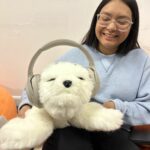
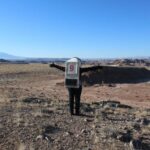
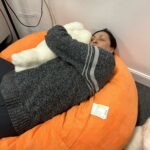
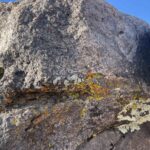
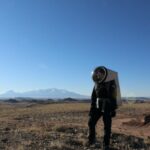

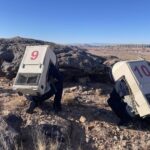

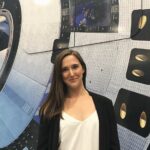
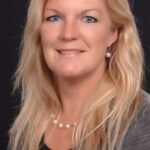


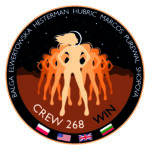

You must be logged in to post a comment.